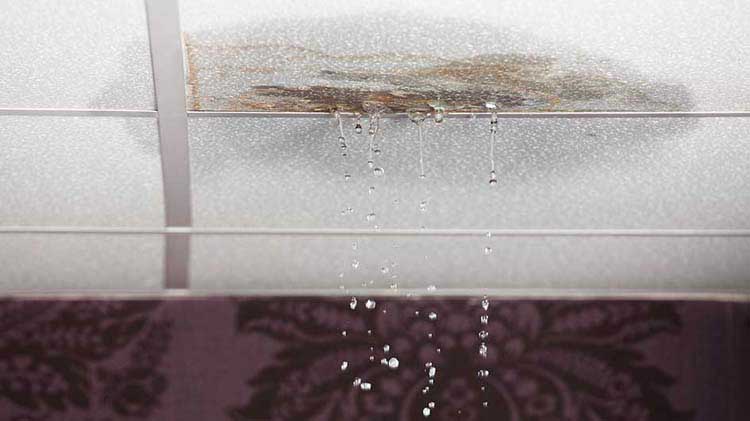Your Residential Most Frequent Water Leak Causes: Investigation
Your Residential Most Frequent Water Leak Causes: Investigation
Blog Article
Here in the next paragraph you can find a bunch of worthwhile help and advice on the subject of How to detect water leaks in your home.

Leakages not only trigger waste of water yet can additionally create unneeded damage to your home and also advertise undesirable natural development. Water leakages may go unnoticed considering that many of the pipework in our home is hidden. By understanding and looking for day-to-day situations that trigger leakages, you can protect your home from future leaks and unneeded damages. Today, we will look at 6 leak creates that may be causing your pipelines to drip.
Instantaneous temperature changes.
Extreme temperature level changes in our pipes can create them to increase as well as contract unexpectedly. This development and tightening may create fractures in the pipelines, particularly if the temperature level are below cold.
Corroded water systems
This may be the cause of discoloration or warping on your water pipes. If our plumbing system is old, think about changing the pipes considering that they are at a greater threat of rust than the newer versions.
Faulty Pipe Joints
Pipeline joints can deteriorate over time, resulting in water leaks. If you have noisy pipelines that make ticking or banging sounds, especially when the hot water is turned on, your pipe joints are most likely under a great deal of pressure.
Intruding roots
The majority of water leaks begin outside the residence rather than inside it. You could discover wet spots or sinkholes in your yard, and also that could mean that tree roots are attacking water lines creating water to permeate out.
Poor Water Connectors
At times, a leak can be created by loosened pipes and pipelines that supply your home appliances. In case of a water links leak, you might discover water running directly from the supply line or puddles around your home appliances.
Blocked Drains
Blocked drains could be irritating as well as inconveniencing, however they can sometimes wind up causing an overflow leading to rupture pipelines. Maintain getting rid of any kind of materials that might decrease your drains pipes that can obstruct them to stay clear of such troubles.
All the above are reasons for leakages but not all water leaks arise from plumbing leaks; some leaks might originate from roof covering leaks. All leaks need to be repaired right away to avoid water damages.
Leaks not only create waste of water however can likewise create unnecessary damage to your residence and also promote undesirable organic development. By looking and also comprehending for day-to-day situations that cause leakages, you can shield your home from future leaks and also unneeded damages. Today, we will certainly look at six leak creates that may be triggering your pipes to drip.
At times, a leak can be triggered by loose hoses and pipes that supply your home appliances. In instance of a water links leakage, you might see water running straight from the supply line or pools around your home appliances.
How To Check For Water Leak In Your Home
How To Check for Leaks
The average household's leaks can account for nearly 10,000 gallons of water wasted every year and ten percent of homes have leaks that waste 90 gallons or more per day. Common types of leaks found in the home are worn toilet flappers, dripping faucets, and other leaking valves. These types of leaks are often easy to fix, requiring only a few tools and hardware that can pay for themselves in water savings. Fixing easily corrected household water leaks can save homeowners about 10 percent on their water bills.
To check for leaks in your home, you first need to determine whether you're wasting water and then identify the source of the leak. Here are some tips for finding leaks:
Take a look at your water usage during a colder month, such as January or February. If a family of four exceeds 12,000 gallons per month, there are serious leaks.
Check your water meter before and after a two-hour period when no water is being used. If the meter changes at all, you probably have a leak.
Identify toilet leaks by placing a drop of food coloring in the toilet tank. If any color shows up in the bowl after 10 minutes, you have a leak. (Be sure to flush immediately after the experiment to avoid staining the tank.)
Examine faucet gaskets and pipe fittings for any water on the outside of the pipe to check for surface leaks.
Undetected water leaks can happen without the home or business owner even realizing. If you suspect a water leak, but not able to find the source. It is time to contact a professional water leak detection service, The Leak Doctor.
How To Find a Water Leak In Your Home
https://www.leakdoctor.com/blog/How-To-Check-For-Water-Leak-In-Your-Home_AE197.html

Hopefully you enjoyed our part on How to Find Water Leaks. Thank you for taking the time to read our article. Liked our post? Please share it. Help others find it. I enjoy reading our article about How to detect water leaks in your home.
Top-notch fix? Dial! Report this page